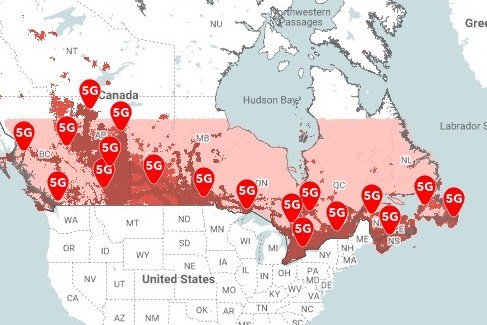Beginning today, Rogers' new satellite-to-mobile service is entering its beta phase and is available free of charge to all Canadians.
The trial phase of Satellite-to-Mobile will initially allow text messaging and text-to-911 south of the 58th parallel. Support for other apps, data and voice services — including 911 voice calls — will be added soon, Rogers states.
Effectively, the new program can turn a regular cellphone into a satellite phone, with coverage spanning approximately 5.4 million square kilometres in Canada.
According to Rogers, the service uses low-Earth orbit satellites through a partnership with SpaceX and Lynk Global. As long as users can see the sky, they can connect to the satellite network.
Among the strongest supporters of the beta launch are search and rescue organizations, who anticipate improved emergency communication through the service.
Chris Mushumanski, president of the BC Search and Rescue Association, told The Citizen the service will be instrumental in helping search and rescue teams.
“The ground search and rescue member volunteers and groups across the entirety of BC welcome this announcement and see it as a big step forward for improving communications,” said Mushumanski.
“There are two angles that we see improving. First, anyone who needs assistance from authorities — whether someone is lost and needs police, or injured and needs to contact BC. Emergency Health Services — will now be able to get help much quicker. Historically, you would have needed an additional device. Now, with your cellphone, you can call 911 and activate those services faster.
“Second, for search and rescue members out in the field during a search or evacuation — like in wildfires or floods — this allows them to communicate more effectively with base.”
Mushumanski, who is based in Vanderhoof, has extensive experience in the North and has seen first-hand how geography can complicate emergency response.
“Looking at the geography of northern British Columbia, you’re talking about vast areas with no cellphone coverage whatsoever,” he said. “Think of the Highway of Tears, or people who’ve gone missing in very remote areas.
“The length of time it takes for someone to notice a person is missing, then launch a search — that hampers our ability to respond quickly. Now, with cellphones in almost everyone’s pockets, people can call for help and we can pinpoint their location much faster.”
Mushumanski said the early response from first responders has been very positive, with strong interest already visible on social media.
However, he cautioned that the technology isn’t foolproof.
“I think it’s always important to remember that our phones are susceptible,” he said. “They’re battery-powered, so this won’t help if your phone is dead. Also, I’m not sure how well it will work with older phones. Folks should test their devices before heading into the backcountry, and always have a backup plan.”
The beta is available until October. After that, the service will be included at no additional cost for customers on the Rogers Ultimate Plan, which costs $85 per month. It will also be available to all Canadians for $15/month.
The beta will be available on the following devices:
- iPhone 13 (all models – Rogers customers only)
- iPhone 14, 15 and 16 (all models)
- Samsung Galaxy S25 (including Plus, Ultra and Edge)
- Samsung Galaxy Z Fold7 (available July 22, 2025)
- Samsung Galaxy Z Flip7 (available July 22, 2025)
- Motorola Razr 2025
- Motorola Razr Ultra 2025
- Motorola Razr+ 2024
- Motorola Edge 2025
Canadians participating in the beta will receive a $5 monthly discount for the first 12 months.
To sign up for the beta trial, visit: rogers.com/mobility/satellite



